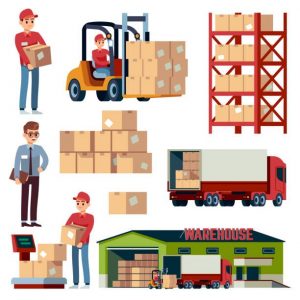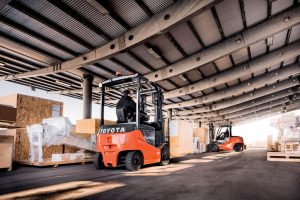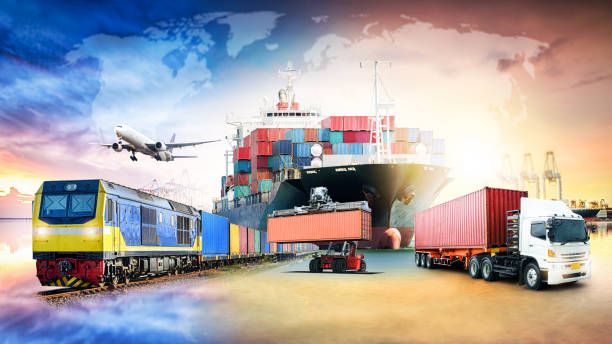Forklifts and the Supply Chain
If you use forklifts in your business, you don’t need any convincing of their value to you. Are you aware of their value throughout the supply chain, though, and how forklifts in general may be partially responsible for allowing your business to prosper? Let’s look at some of the ways forklifts are used and the roles they play in the supply chain.

Image courtesy of iStock by Getty Images – Photo by Olga Kurbatova
Forklifts come into play in manufacturing almost as soon as raw materials are taken from the ground. In an earlier blog, Forklift Trivia, we mentioned that the first forklift made for lifting 20,000 pounds or more was manufactured more or less from scratch out of necessity by a Swedish sawmill that needed a forklift big enough to transport sawn trees. Demand for their forklift led to the establishment of the Kalmar forklift company. Let’s follow that lumber down the supply chain and see where else forklifts are needed.
For argument’s sake, let’s say the lumber is needed for pulping. Forklifts will be needed throughout the pulping stage. When it comes time to produce paper products, forklifts will be used in even more ways. They will be used for moving innumerable supplies used in the pulping and manufacturing processes and then again for transporting finished products. Some of the boxes made from the paper pulp will be loaded onto forklifts and delivered to the conveyors, where the boxes will be filled with reams of paper and other paper products.
Now the manufacturer has hundreds of boxes of finished paper products that need to be delivered to distributors’ warehouses. Forklifts will be used to load the boxes onto trucks and then, if the order is to be shipped overseas, forklifts will be needed to load the boxes into containers and large container forklifts will then carry the containers to loading areas, where they will be picked up by cranes and stacked in container ships.

Image courtesy of Toyota Forklift – Bahrns ToyotaLift is an award-winning Toyota Forklift Dealership
The process continues after the containers reach their ports of call. Forklifts will be used for unloading containers, loading boxes into delivery vehicles, and unloading them when they reach a primary distribution warehouse. The boxes will then be stacked on pallet racks until delivery orders are issued. Then a forklift will remove the boxes from the pallet racks, load them onto delivery vehicles and send them on their way. The boxes may then be stored in a smaller warehouse before finally being sent to the retail outlets that will finally remove the paper products from their cardboard boxes and stack them on shelves, where they will be purchased by consumers.
Consumers won’t purchase those paper products unless they are affordable, though. What makes them affordable after they have undergone such a long process of manufacturing and delivery? While they’re not solely responsible, forklifts can take a lot of the credit. From the biggest 10+ ton behemoth to the nimble electric Narrow Aisle forklift, forklifts are some of the most cost-efficient links in the supply chain.
Any chain is only as strong as its weakest link. Make sure you’re not a weak link by sticking to a strict maintenance schedule and keeping your forklifts in good running order. Your business depends on it and ultimately, so do many others.

